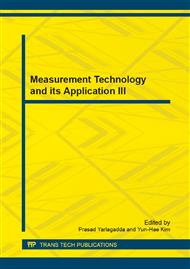p.1085
p.1090
p.1095
p.1100
p.1104
p.1108
p.1113
p.1122
p.1126
Research of the Inverted Pendulum System Based on the Linear Quadratic Optimal Control
Abstract:
As an ideal experimental method in the study of control theory, inverted pendulum system is an indispensable tool to examine the effects of control strategy. In this paper the corresponding mathematical model and the state space equation are established according to studying the working principle and balance control problem of the single stage linear inverted pendulum system. Using MATLAB solves them and gets the consequences. Finally, the linear quadratic optimal control strategy is used to design the controller of single-stage inverted pendulum system, and a simulation study is carried out. The simulation results show the effectiveness of the most sorrow regulator of the quadratic. And basic rule can be found out between the dynamic response of the inverted pendulum system and weighting matricesandin the LQR.
Info:
Periodical:
Pages:
1104-1107
Citation:
Online since:
June 2014
Authors:
Price:
Сopyright:
© 2014 Trans Tech Publications Ltd. All Rights Reserved
Share:
Citation:


